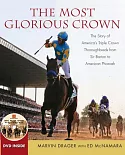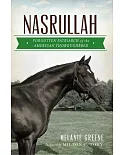This is the second edition of the classic on the history of British horse racing. It provides a detailed and far-ranging social and economic analysis of
the major changes in British flat racing, in particular in the period between 1830 and 1939.
Four major themes are explored.
Firstly, the changing character and structure of the sport.
Secondly, the morality of racing, which was a corrupt sport par excellence for much of the nineteenth century.
Thirdly, on four categories of participants in racing – jockeys, trainers, owners and breeders. Here, the author assesses whether or not these could
make money out of racing.
Fourthly, the book examines gambling and its important symbiotic relationship with racing.
The televised, sponsored, carefully governed sport today is a vastly different affair from that of the 18th century. Then racing was a free, social
event, the highlight of the entertainment calendar for the bulk of the local community.
By the late 19th century most race meetings were highly commercial enterprises, requiring payment from all spectators, many of whom had travelled some
distance to attend. The excitement and historical interest of these meetings is well captured here.





















